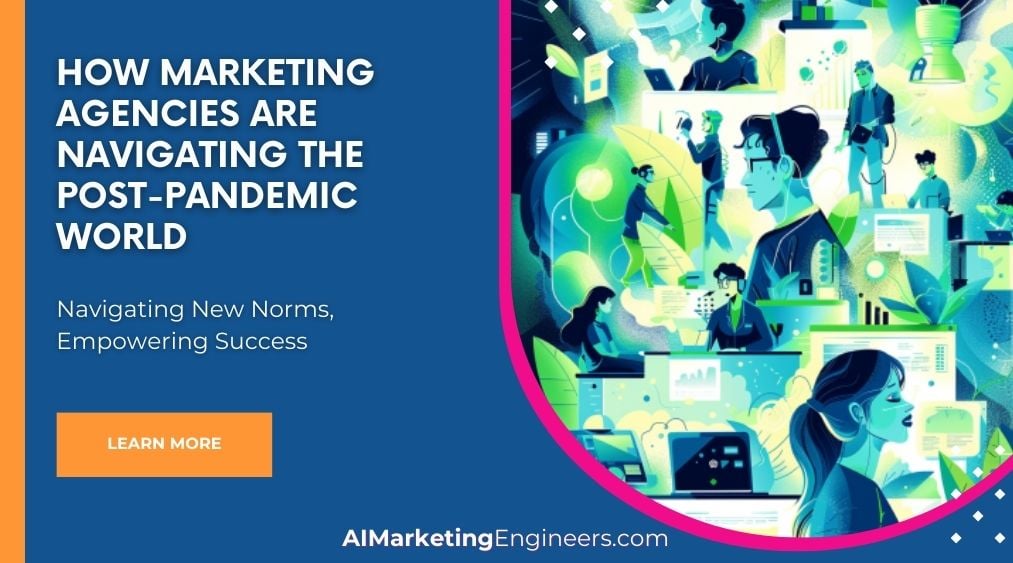Key Takeaways
✅ Cost-Effective Tools and Solutions: Small businesses can leverage affordable, open-source tools like Apache Hadoop and cloud-based solutions to access advanced analytics without significant upfront costs. These tools democratize big data analytics, making it accessible to firms with tight budgets.
✅ Data Integration and Quality: Ensuring data quality is crucial. By investing in data cleaning and integration tools, small businesses can maintain data consistency and accuracy, leading to more reliable decision-making. Assigning data stewards can help oversee this process and maintain compliance with data governance policies.
✅ Strategic Planning and Phased Implementation: A phased approach to implementing big data analytics allows small businesses to manage costs and scale their infrastructure gradually. Focusing on high-impact areas first and leveraging external consultants can help circumvent the lack of in-house data science expertise.
Introduction
Have you ever wondered how small enterprises can compete in a world dominated by data analytics giants? Leveraging Big Data can indeed be a game-changer, but the concern often revolves around cost and resource constraints. While big data analytics might seem out of reach for smaller firms, affordable analytics strategies can level the playing field. This article uncovers how small businesses can harness the power of affordable big data analytics tools to boost decision-making, optimize operations, and drive innovation. Keep reading to discover actionable insights and groundbreaking information that could transform your business landscape.
Top Statistics
| Statistic | Insight |
|---|---|
| 97.2% of companies invest in big data solutions | This high percentage showcases how ubiquitous big data is becoming, making it essential for small enterprises to adopt these strategies to stay competitive. |
| 56% of data leaders reported increased big data and analytics budgets | This trend indicates that investing in big data is a priority for many businesses, highlighting its potential for driving innovation and growth. |
| Businesses that invest in data and analytics report a profitability or performance increase of at least 11% | Seeing tangible returns makes a strong case for small businesses to leverage affordable analytics to achieve similar gains in performance and profitability. |
| Organizations that can quantify their gains from analyzing big data report an average 8% revenue boost and 10% cost reduction | These metrics underscore the potential financial impact of big data, making it a valuable tool for small enterprises aiming to improve efficiency and revenue. |
| 54% of organizations with advanced data and analytics maturity have increased their revenue, and another 44% have achieved a competitive advantage | This statistic highlights the importance of advancing data capabilities, suggesting that even small steps towards better data usage can yield significant business benefits. |
The Big Data Dilemma: Why Small Enterprises Need Affordable Analytics Strategies
Big data has become a game-changer in the business landscape, offering powerful insights that can drive growth and efficiency. However, small enterprises often struggle with the high costs and complexity associated with data analytics. Limited resources and tight budgets can make it difficult for small businesses to adopt sophisticated analytics tools. Yet, in a competitive market, utilizing big data is not just an advantage; it’s a necessity for survival and growth.
Demystifying Big Data: Understanding the Basics and Identifying Key Data Sources
Before diving into strategies, it's essential to grasp what big data really means. Big data includes vast volumes of structured and unstructured data that can provide meaningful insights. Common sources of big data for small enterprises include customer feedback, social media interactions, and transactional data. Identifying the data that's most relevant to your business can help you focus efforts where they're most impactful.
Affordable Analytics Tools for Small Enterprises: Open-Source and Cloud-Based Solutions
High costs in data analytics are often due to expensive software and infrastructure. Fortunately, there are affordable tools available. Open-source solutions like Hadoop and R offer robust analytics capabilities without licensing fees. Cloud-based services like Google Analytics and Microsoft Power BI provide scalable and easy-to-use platforms, often with free basic versions. These tools allow small enterprises to gain valuable insights without breaking the bank.

Practical Applications of Big Data Analytics for Small Enterprises: Case Studies and Examples
Seeing is believing, and real-life examples can illustrate the power of big data analytics. For instance, a local bakery used customer feedback analytics to tweak its product offerings, resulting in a 20% increase in sales. Another small enterprise might use social media data to improve customer engagement, driving more foot traffic to their physical store. These case studies demonstrate that big data isn't just for big companies; small businesses can indeed benefit from these insights.
Overcoming Big Data Challenges: Data Quality, Security, and Talent Acquisition
While big data offers numerous benefits, it also presents significant challenges. Ensuring data quality is crucial for reliable insights, and this requires consistent data cleaning and validation efforts. Security concerns are also paramount, as data breaches can be costly and damaging. Talent acquisition, particularly hiring specialized data scientists, can be difficult for small enterprises. However, solutions like part-time consultants or data analytics courses for existing staff can mitigate these issues.
Getting Started with Big Data Analytics: A Step-by-Step Guide for Small Enterprises
Starting with big data analytics can feel overwhelming, but a structured approach can simplify the process. Begin by identifying clear business goals—what do you hope to achieve with data analytics? Next, select the right tools that fit your needs and budget. Finally, foster a data-driven culture within your organization by training staff and encouraging data-informed decision-making. By following these steps, small enterprises can effectively leverage big data analytics to enhance their operations and gain a competitive edge.
By focusing on these key areas, small enterprises can navigate the complexities of big data and develop cost-effective strategies that yield significant benefits. Whether through identifying critical data sources or selecting the right tools, the path to harnessing big data is accessible, even for businesses with limited resources.

AI Marketing Engineers Recommendation
Recommendation 1: Focus on Customer Segmentation Using Big Data: Small enterprises should start by understanding their customers better through big data. By analyzing various data points like buying behaviors, website interactions, and feedback, businesses can create highly detailed customer segments. For instance, according to a report by Statista, businesses that used customer segmentation saw a 24% increase in revenue on average. Tools like Google Analytics and HubSpot can make this task accessible even for smaller budgets. The idea is to know who your top customers are, what they like, and tailor your marketing strategies accordingly.
Recommendation 2: Implement Predictive Analytics for Inventory Management: Utilizing big data for predictive analytics can dramatically improve your inventory management. According to Deloitte, predictive analytics can reduce inventory costs by 10-15%. Small businesses can leverage simple analytics tools to forecast demand for their products more accurately, helping prevent overstock or stockouts. For example, platforms like QuickBooks Online offer integrations that allow you to analyze sales data and trends over time, making it easier to plan inventory needs without breaking the bank.
Recommendation 3: Utilize Affordable Big Data Tools and Platforms: There are numerous affordable tools out there that can help small businesses leverage big data effectively. Tools like Zoho Analytics and Microsoft Power BI offer comprehensive data analytics capabilities at a fraction of the cost of enterprise solutions. These platforms allow small enterprises to collect, visualize, and analyze data from multiple sources. According to a survey by Gartner, businesses that implemented data analytics tools saw a 5x return on investment within three years. Taking advantage of these tools can give small businesses the competitive edge they need without overwhelming their budget.
Relevant Links
- How to Leverage AI for Small Business Growth
- Essential Strategies for Impactful Campaign Goals
- Drive Market Penetration with Audience Size Strategies
- Improve Customer Engagement with Behavioral Insights
- Transform Your Marketing with Personalized Advertising
Conclusion
In leveraging big data for small enterprises, it becomes evident that the proper strategies and tools can truly democratize data analytics, irrespective of budget constraints. This article underlines the importance of understanding the basics of big data, identifying key data sources, and opting for affordable tools such as open-source platforms and cloud-based solutions. Real-world examples prove that even small businesses can harness big data to achieve significant growth, engage more effectively with customers, and optimize operations. Moreover, addressing common challenges, from maintaining data quality to securing specialized talent, equips small enterprises to navigate the complexities of big data analytics.
The guide provided offers a practical starting point for any small enterprise looking to embark on this journey. By aligning business goals with the right analytics tools, and fostering a data-driven culture, small enterprises can unlock the full potential of big data. It's more achievable than ever—so why not start today?

FAQs
Question 1: What is big data analytics?
Answer: Big data analytics is the process of examining large datasets to uncover valuable insights, hidden patterns, and market trends. It involves analyzing structured, semi-structured, and unstructured data from various sources to aid in informed decision-making.
Question 2: Why is big data analytics important for small businesses?
Answer: Big data analytics is crucial for small businesses as it helps them remain competitive, optimize operations, and make strategic decisions. It provides insights into customer behavior, identifies new revenue opportunities, and improves customer service.
Question 3: What are the key technologies involved in big data analytics?
Answer: Key technologies include cloud services, SaaS-based analytics tools, artificial intelligence (AI), machine learning (ML), the Internet of Things (IoT), data as a service (DaaS), and analytics as a service (AaaS).
Question 4: How does big data analytics integrate with AI and ML?
Answer: The integration of big data analytics with AI and ML enables more sophisticated analytical tools, automates complex decision-making processes, and provides deeper insights into customer behavior and operational efficiency.
Question 5: What is the role of the Internet of Things (IoT) in big data analytics?
Answer: IoT devices generate vast amounts of data, which can be analyzed to gain instant insights into operational efficiency, customer engagement, and market trends.
Question 6: How do data marketplaces and analytics as a service (AaaS) benefit small businesses?
Answer: Data marketplaces allow small businesses to purchase specific datasets, while AaaS provides access to analytics capabilities without significant investment in hardware or software, making big data analytics more scalable and cost-effective.
Question 7: How can small businesses implement big data analytics?
Answer: Small businesses can start by identifying relevant data sources, integrating them, and using cost-effective cloud services and SaaS-based analytics tools. They should also prioritize data security and compliance.
Question 8: What are some practical applications of big data analytics in small businesses?
Answer: Examples include using big data to inform pricing decisions, personalize customer experiences, and improve operational efficiency. It can also help in identifying customer value and acquisition costs.
Question 9: What are the common challenges faced by small businesses when implementing big data analytics?
Answer: Challenges include managing the volume and variety of data, ensuring data quality, and addressing privacy and governance concerns. Small businesses should also be prepared to invest time and resources in learning and adapting to new technologies.

Academic References
- GXA. (2024). Leveraging Big Data Analytics for Enhancing Small Business Decision-Making. This paper finds that small businesses can enhance their decision-making capabilities by using big data analytics to identify new revenue opportunities, improve customer service, and predict business outcomes with better accuracy.
- HubSpot Blog. (2022). Big Data for Small Businesses: How To Leverage. The study reveals strategies for small businesses to utilize big data for personalizing customer experiences, improving pricing decisions, and maintaining agility in a competitive market.
- Functionize. (2023). A Look at Big Data's Potential for Small and Medium Businesses. Despite common beliefs, this article shows how small and medium businesses can utilize big data technologies to gain valuable insights, streamline operations, and foster innovation.
- Skills.ai. (2024). Comparing Big Data and Small Data Analytics for Business Insight. This reference contrasts how large corporations use big data for innovation and efficiency whereas small and medium-sized enterprises maximize small data for agility and market intimacy.
- Talend. Big Data for Small Business: A Complete Guide. The guide discusses how big data analytics can provide small businesses with significant insights into customer preferences and behaviors, leading to efficient decision-making and targeted marketing campaigns.









